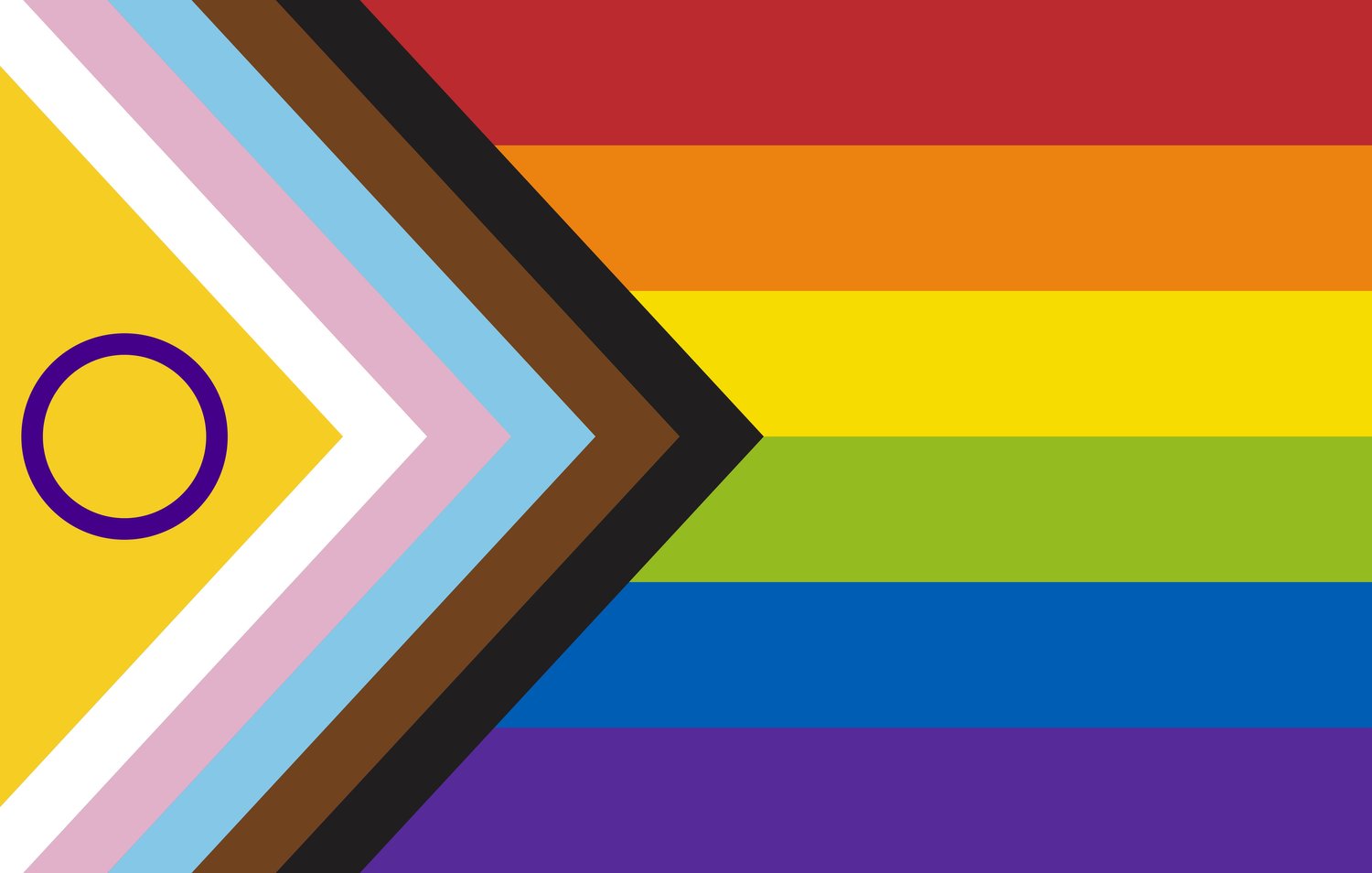The Home of the Global Inclusive Pride Flag
Welcome to the authentic source of the Intersex-Inclusive Pride flag. We have created a place where you can learn the history of the flag, get free downloads of the authentic flag files and learn how you can become part of the global pride flag movement.
Valentino with 100 Intersex-Inclusive pride flags Regents Street 2022
Intersex-Inclusive Pride Flag 2021
created by Valentino Vecchietti (she/they)
A Journey to the Intersex-Inclusive Pride Flag
In 2021 the Intersex-Inclusive Pride Flag was created by Valentino Vecchietti (she/they), an award winning intersex equality campaigner, writer artist consultant and diversity speaker.
The flag became a global viral sensation and was internationally welcomed as the new Pride flag, increasing LGBTI+ allyship and intersex visibility, representation and inclusion worldwide.
By extending the inclusion of natural diversity in sex characteristics, Valentino’s Pride flag also enshrines the international human rights framework found in the Yogyakarta Principles plus10 known as SOGIESC, which recognises and calls for Protections from discrimination for those with natural diversity in: Sexual Orientation, Gender Identity and Expression and Sex Characteristics.
The rainbow section of this flag not only represents sexual orientations but also recognises diverse orientations such as asexual and aromantic.
Valentino maintained the meanings and intentions of the creators of all previous iterations of the Pride flags.
More about the flags that led to the Intersex Inclusive Pride flag
2018
Designed by Daniel Quasar USA
The Progress Pride flag was created by non-binary American designer Daniel Quasar, building on Amber Hikes’ Philly Pride flag and incorporating Monica Helms’ Transgender flag.
Quasar also included an intention to represent those living with HIV and those who have died of AIDS.
2017
Introduced by Amber Hikes USA
The creation of the Philly Pride flag was overseen by Amber Hikes of the Philadelphia Office for LGBT Affairs in America. It was part of the More Colour More Pride campaign. This flag built on Gilbert Baker’s Rainbow Pride flag, adding black and brown stripes.
The black and brown stripes represent black, brown, people of colour and indigenous peoples in the LGBTIQA+ community.
The Philly Pride flag was a significant moment as it was the first time since 1978 that a new Pride flag was introduced, however, the flag faced challenge as some felt that the flag should not be changed. The Philly Pride flag opened the door to further development of the flag to be even more inclusive.
2013
Created by Morgan Carpenter Australia
The Intersex Pride flag was created by Morgan Carpenter co-found of Intersex Rights Australia. This flag represents those with natural diversity in their sex characteristics.
The yellow flag has an unbroken purple, circular hoop which symbolises the intersex people are born whole and complete and also represents our potentialities. Yellow and Purple colours are traditionally used outside of the gendered pink and blue colours for baby boys and baby girls.
Intersex is an umbrella term for natural diversity in our primary and secondary sex characteristics. Primary sex characteristics are those we are born with, such as chromosome patterns and sex organs. Secondary sex characteristics are those we develop at puberty.
1999
Created by Monica Helms USA
The Transgender Pride flag was created by Monica Helms, an American Trans woman. This flag represents natural diversity in gender identity and expression.
The five stripes: baby blue, baby pink, white, baby pink and baby blue, symbolise the traditional colours for baby boys and baby girls, while the white stripe recognises those who are transitioning as well as those who have neutral gender identities and those who have undefined gender identities.
Trans (as known as transgender) is an umbrella term for those whose gender identity and/or gender expression does not correspond to their sex assignment at birth.
1978
Designed by Gilbert Baker USA
The Rainbow Pride Flag was created by American artist Gilbert Baker. Originally an 8 stripe rainbow, it was later developed into a 6 stripe flag. The six colours are red, orange, yellow, green, blue and purple.
This flag is largely considered to be representative of natural diversity in sexual and romantic orientations, as well as diverse orientations.







